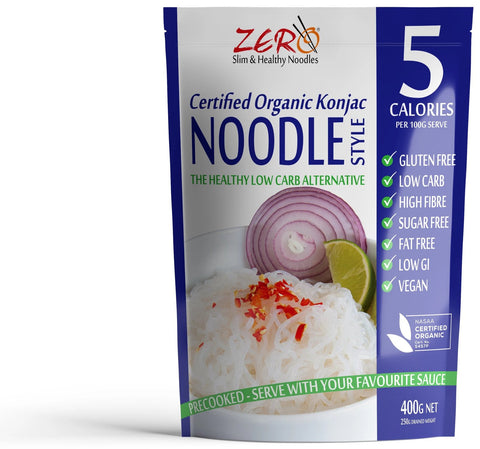Things To Know About Miracle Of Zero Noodles
Although they have only recently started to gain popularity in Western countries, Zero noodles have actually been used in Asian cooking for centuries because of their many health benefits. Read on to find out more about these unique and tasty noodles, which make a great substitute for regular pasta and rice.
Zero noodles are made from natural ingredients
Zero noodles are made from glucomannan flour, which is made from the Konjac plant; this plant is also known as the elephant yam. Glucomannan is a natural, water-soluble dietary fiber that cannot be broken down completely by the body, and it is traditionally used in Chinese medicine to detoxify and cleanse the body.

Zero noodles do not have a long list of ingredients with chemicals and artificial additives like other types of noodles do. Like most real health foods, Zero Noodles have just a couple of ingredients. In fact, Zero Noodles are made up of 97% water and 3% soluble fiber glucomannan, with the inclusion of a little natural calcium to help the noodles maintain their shape.
Zero noodles are suitable for various specialized diets
Zero noodles are fat-free, sugar-free, gluten-free and low in carbs and calories; they also boast a low GI. This makes them suitable for various types of specialized diets. Zero Noodles are ideal for vegetarians, vegans, people with diabetes, individuals following Paleo or Keto diets, and those with dairy, egg, wheat, gluten or soy allergies or intolerances.
Zero noodles can help you lose weight
Because Zero Noodles are high in glucomannan, they can be an effective weight loss tool. Some studies have shown that glucomannan is a type of fiber that can assist weight loss. It is believed that the viscous fibers and high water content keep your stomach feeling full and help you feel satisfied for longer.

Zero noodles are also naturally fat-free and sugar-free, so they make a great substitute for regular noodles. Swapping your usual noodles or pasta for Zero Noodles or Zero Noodles Fettuccine, for example, means you could cut down on your calories by around 2800 calories a week while still enjoying regular, delicious meals.
Zero Noodles have extra health benefits
In addition to helping you feel fuller for longer, Zero Noodles have additional health benefits.
The Konjac flour used to make Zero Noodles can help to improve digestion and support your intestines thanks to their natural prebiotics, which can help to feed the friendly bacteria in the intestines. Glucomannan, like other forms of dietary fiber, increases bulk, and promotes gut and colon health by speeding up the transit time through the colon.
Glucomannan has been traditionally used in China for detoxing and cleansing and is also used to help ease constipation. As a good source of natural soluble fiber, glucomannan is considered to be what is known as a bulk-forming laxative, which effectively relieves constipation by adding water and bulk to help get things moving.
Zero noodles have a long shelf life and are incredibly convenient
Zero Noodles are packaged in a pouch that can be stored at room temperature for two years from their production date, so they are very easy to keep on hand. They do not need to be kept in the refrigerator and are shelf-stable, which means that they are incredibly convenient to have in your pantry. Once the package of noodles has been opened, you can place any leftover noodles that you do not use in water in a sealed container in the refrigerator, where they will keep for a little longer (always check the instructions on the package). Do not freeze Zero Noodles; because of the consistency of the noodles and their high water absorption, this will make them inedible. However, any leftover noodles that you have prepared in a sauce will also be delicious the next day as they will absorb all the delicious flavors from the sauce they are cooked in.
Zero Noodles are easy to prepare

Zero Noodles come precooked, so they are very simple to prepare and can be easily incorporated into your favorite meals. To prepare the noodles, simply drain them, give them a quick rinse and serve them with your favorite sauce. Zero Noodles, Zero Pasta or Zero Rice work particularly well in Asian and Italian cuisines, such as in various kinds of curries, with tomato or creamy pasta sauces, in soups such as hot and sour or miso soup, or in salads with shredded vegetables and dressing.